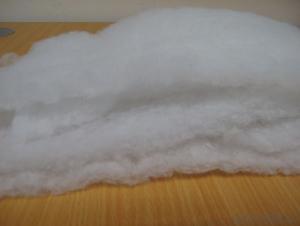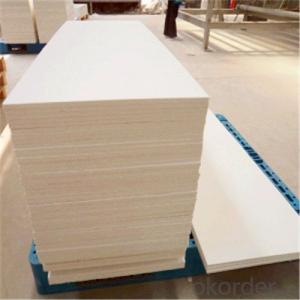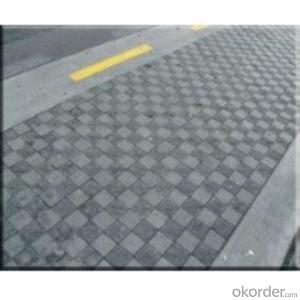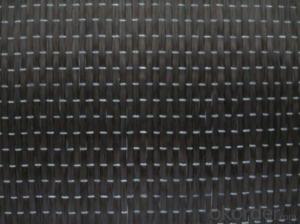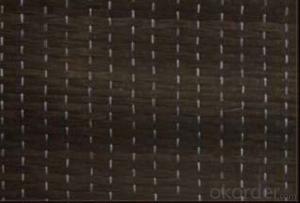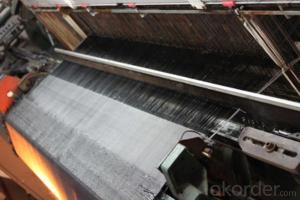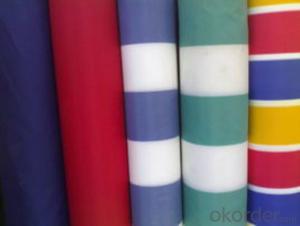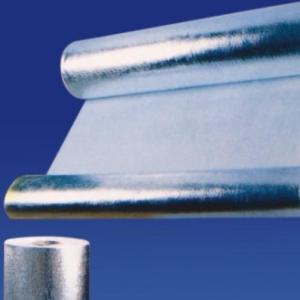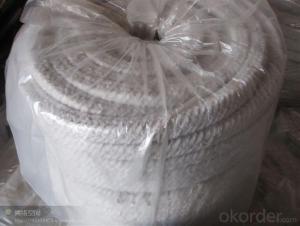heat insulation refractory Welding Pillow fiberglass fabric made 550C- 1000C
- Loading Port:
- Shanghai
- Payment Terms:
- TT OR LC
- Min Order Qty:
- 1 m.t.
- Supply Capability:
- 111 m.t./month
OKorder Service Pledge
OKorder Financial Service
You Might Also Like
Specifications
Welding Pillow fiberglass fabric made
Welding pillow, fire resistance pillow, it is made of fiberglass
Description:
Welding pillow, fire resistance pillow, it is made of fiberglass and insert with glass wool or ceramic wool, sewing it into pillow, it is good welding products while need pillow shape fire resistance.
We can manufacture all kinds of welding pillor, fire resistance pillow as per customer request. Just contact our sales for details.
Outside Materials : fiberglass fabrics, Silica fabrics, heat treated fiberglass fabrics, silicone coated fiberglass fabrics, Ceramic fiber fabric, Carbonizedfiber fabrics, Aluminum coated fiberglass fabrics, Acrylic coated fiberglass fabrics.
Inside Materials: Glass fiber wool, ceramic fiber wool
Temperature resistance: 500 Deg. C . to 1000 Deg. C.
Size: as per customer request
- Q:Can glass fiber textiles be used in the production of sporting equipment?
- Yes, glass fiber textiles can be used in the production of sporting equipment. Glass fiber textiles, also known as fiberglass textiles, are made from fine strands of glass that are woven together to create a fabric-like material. This material is lightweight, strong, and flexible, making it ideal for use in sporting equipment. One common use of glass fiber textiles in sporting equipment is in the construction of tennis rackets. The glass fibers provide added strength and stiffness to the racket, allowing players to generate more power and control in their shots. Additionally, the flexibility of the glass fibers helps to absorb and dampen vibrations, reducing the risk of injury and improving comfort during gameplay. Glass fiber textiles are also used in the production of hockey sticks. The strong and lightweight nature of the material allows for greater stick speed and maneuverability on the ice. The flexibility of the glass fibers also helps to enhance the shot power and accuracy, making them a popular choice among hockey players. Furthermore, glass fiber textiles can be found in the construction of various protective gear for sports such as helmets, shin guards, and body armor. The high strength-to-weight ratio of glass fibers provides excellent impact resistance, ensuring the safety of athletes during intense physical activities. In conclusion, glass fiber textiles have proven to be a valuable material in the production of sporting equipment. Their lightweight, strong, and flexible properties make them an excellent choice for enhancing performance and safety in various sports.
- Q:Can glass fiber textiles be used in reinforcement of hemp fibers?
- Yes, glass fiber textiles can be used in the reinforcement of hemp fibers. Glass fiber textiles are known for their high strength and stiffness, making them ideal for reinforcing materials that require additional structural support. Hemp fibers, on the other hand, are known for their natural strength and durability. By combining glass fiber textiles with hemp fibers, it is possible to enhance the overall strength and performance of the hemp fibers. This combination can be particularly beneficial in applications where a high level of strength and durability is required, such as in the production of composite materials, construction materials, or automotive components. Additionally, the use of glass fiber textiles can also help to improve the dimensional stability and resistance to moisture of the hemp fibers, further enhancing their overall performance.
- Q:Can glass fiber textiles be used in geotextile applications?
- Yes, glass fiber textiles can be used in geotextile applications. Geotextiles are used in various civil engineering and environmental projects to provide filtration, separation, reinforcement, and drainage functions. Glass fiber textiles have strong mechanical properties, such as high tensile strength and modulus, which make them suitable for geotextile applications. They can effectively reinforce soil, provide stability to slopes, and prevent erosion. Additionally, glass fiber textiles are resistant to chemicals, ultraviolet (UV) radiation, and biological degradation, making them durable and long-lasting in geotextile applications.
- Q:Can glass fiber textile be used in solar panels?
- Yes, glass fiber textile can be used in solar panels. Glass fiber textile is a lightweight and flexible material that possesses excellent electrical insulation properties. It can be used as a substrate or backing material in solar panels to provide structural support and protection to the delicate solar cells. The use of glass fiber textile in solar panels helps to enhance their durability, as it offers resistance to weathering, moisture, and UV radiation. Additionally, the flexibility of glass fiber textile allows for easier integration into various solar panel designs, enabling greater flexibility in installation options. Therefore, glass fiber textile is a suitable material for use in solar panels and contributes to their overall efficiency and longevity.
- Q:Can glass fiber textiles be used in reinforcement of foam materials?
- Glass fiber textiles have the capability to reinforce foam materials, resulting in a notable enhancement in their overall mechanical properties. Due to its remarkable strength and stiffness, glass fiber is widely utilized as a reinforcing material. When glass fiber textiles are incorporated into foam materials, they serve as a reinforcement, imparting additional strength and rigidity to the foam structure. This reinforcement effectively heightens the foam's ability to resist bending, compression, and impact, making it suitable for a variety of applications that demand increased strength. Furthermore, glass fiber textiles also contribute to the foam's dimensional stability and resistance against heat, chemicals, and moisture. Consequently, glass fiber textiles present themselves as a viable option for reinforcing foam materials.
- Q:Can glass fiber textile be used in concrete reinforcement?
- Yes, glass fiber textile can be used as a reinforcement material in concrete. Glass fiber textile, also known as glass fiber fabric or glass fiber reinforced plastic (GFRP), is a lightweight and high-strength material that can effectively enhance the mechanical properties of concrete. When embedded in concrete, glass fiber textile helps in increasing the tensile strength, flexural strength, and impact resistance of the concrete, making it more durable and resistant to cracking. Additionally, glass fiber textile is corrosion-resistant and does not rust, providing a longer lifespan for concrete structures. It is commonly used in various applications such as precast concrete panels, beams, columns, and slabs.
- Q:Can glass fiber textiles be used in electrical insulation?
- Yes, glass fiber textiles can be used in electrical insulation. Glass fiber textiles have excellent electrical insulation properties due to their high dielectric strength and low electrical conductivity. They can effectively isolate and protect electrical components from electrical currents and prevent any leakage or short circuits.
- Q:Can glass fiber textiles be used in reinforcement of concrete?
- Yes, glass fiber textiles can be used in the reinforcement of concrete. Glass fiber textiles, also known as fiberglass, are strong and lightweight materials that can be embedded into concrete to increase its tensile strength and durability. The textiles are typically woven into sheets or mats and can be easily placed within the concrete mixture during the construction process. Once the concrete sets, the glass fiber textiles provide additional strength to resist cracking and prevent the propagation of cracks. This reinforcement technique is commonly used in various construction applications such as bridges, buildings, and pavements. Additionally, glass fiber textiles are corrosion-resistant, making them suitable for use in environments where concrete is exposed to harsh conditions such as saltwater or chemical exposure. Overall, the use of glass fiber textiles in concrete reinforcement improves the structural performance and extends the lifespan of concrete structures.
- Q:How is glass fiber made?
- Glass fiber, also known as fiberglass, is made through a process called fiberization. The process begins with the raw material, which is usually silica sand, but can also include other additives like limestone or alumina. These raw materials are melted in a furnace at a temperature of around 1500°C (2732°F) until they become a molten liquid. Once the molten glass is formed, it is then forced through tiny holes in a device called a bushing. This bushing contains hundreds or even thousands of small holes, each around 10-25 micrometers in diameter. As the molten glass is pushed through these holes, it is rapidly cooled by either air or water jets. This rapid cooling solidifies the molten glass into thin strands or fibers. The fibers are then collected and wound onto spools or gathered into mats, depending on the desired final product. These fibers can be further processed to give them specific properties. For instance, they can be coated with a sizing material to improve their compatibility with resins or other materials they will be used with. The resulting glass fibers are strong, lightweight, and resistant to heat, chemicals, and electricity. They are widely used in various industries, such as construction, automotive, aerospace, and even in everyday household items. Glass fiber-reinforced plastics (GRP) and glass wool insulation are some common applications of glass fiber. In summary, glass fiber is made by melting raw materials, forcing the molten glass through tiny holes to form fibers, and then cooling and collecting these fibers for further processing. This manufacturing process allows for the production of versatile and durable fibers that are essential in many modern applications.
- Q:Can glass fiber textiles be used in the production of composites?
- Yes, glass fiber textiles can be used in the production of composites. Glass fiber textiles are commonly used as a reinforcing material in composite materials due to their high strength-to-weight ratio, excellent mechanical properties, and resistance to chemicals and temperature. When combined with a matrix material, such as epoxy or polyester resin, glass fiber textiles can enhance the overall strength, stiffness, and durability of the composite. This makes them suitable for various applications, including aerospace, automotive, construction, and marine industries. The versatility and performance of glass fiber textiles make them a popular choice for composite production.
1. Manufacturer Overview |
|
|---|---|
| Location | |
| Year Established | |
| Annual Output Value | |
| Main Markets | |
| Company Certifications | |
2. Manufacturer Certificates |
|
|---|---|
| a) Certification Name | |
| Range | |
| Reference | |
| Validity Period | |
3. Manufacturer Capability |
|
|---|---|
| a)Trade Capacity | |
| Nearest Port | |
| Export Percentage | |
| No.of Employees in Trade Department | |
| Language Spoken: | |
| b)Factory Information | |
| Factory Size: | |
| No. of Production Lines | |
| Contract Manufacturing | |
| Product Price Range | |
Send your message to us
heat insulation refractory Welding Pillow fiberglass fabric made 550C- 1000C
- Loading Port:
- Shanghai
- Payment Terms:
- TT OR LC
- Min Order Qty:
- 1 m.t.
- Supply Capability:
- 111 m.t./month
OKorder Service Pledge
OKorder Financial Service
Similar products
New products
Hot products
Hot Searches
Related keywords
